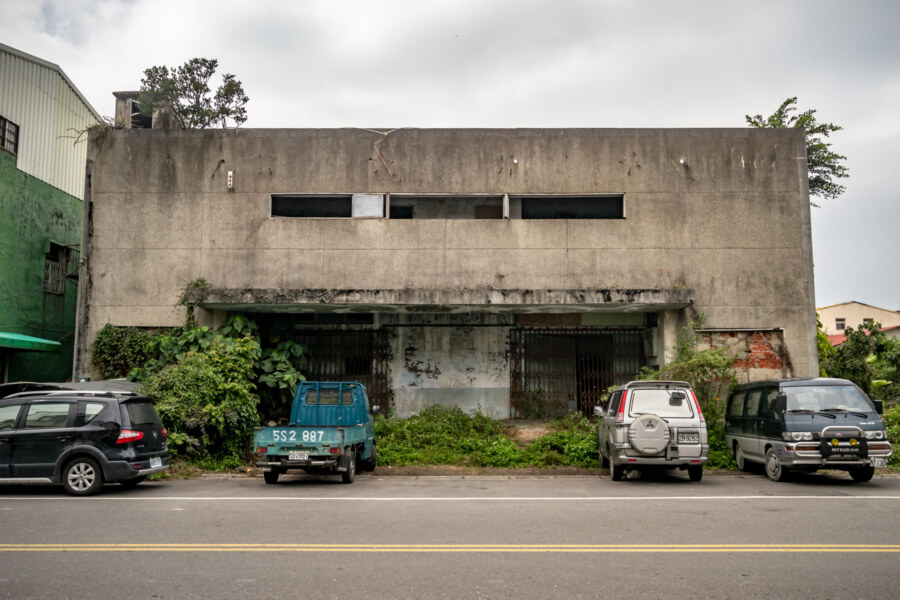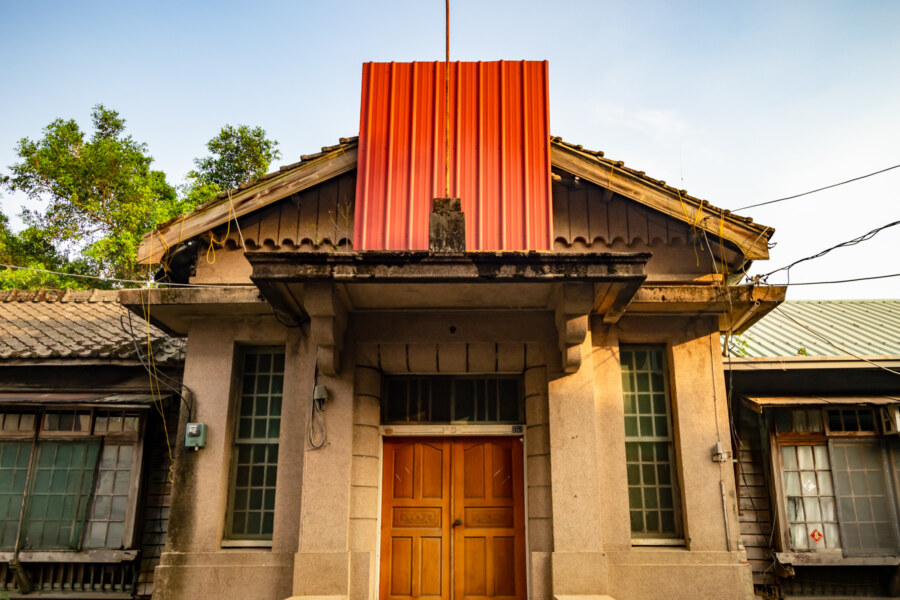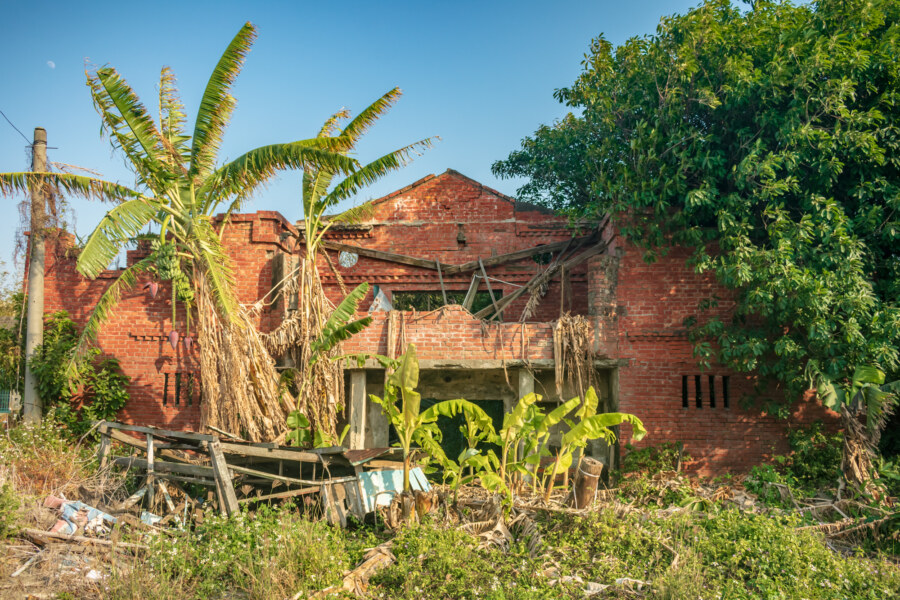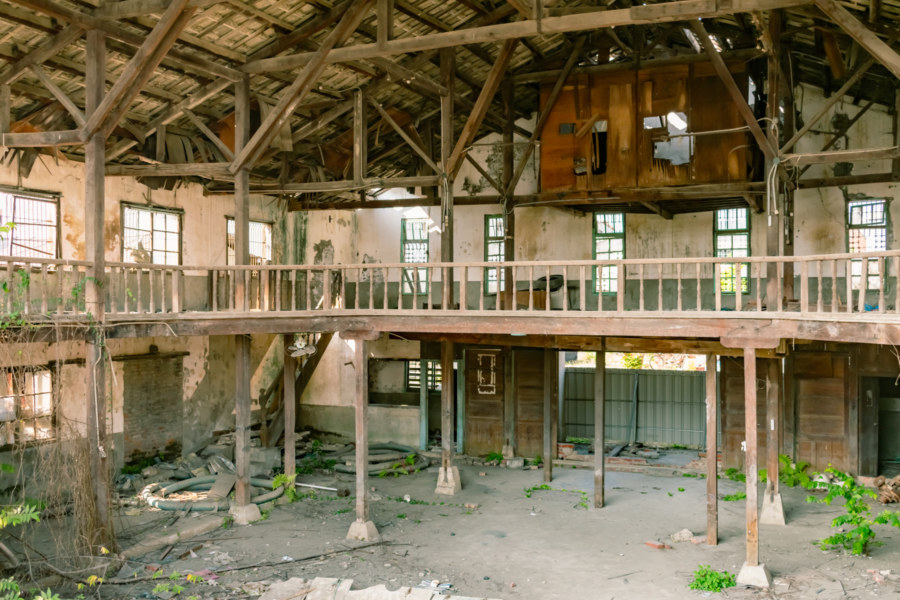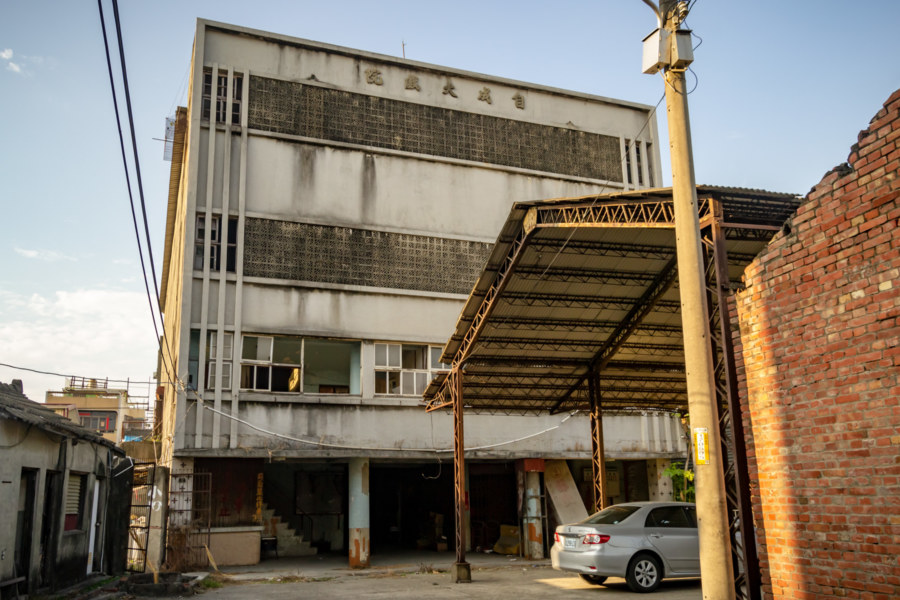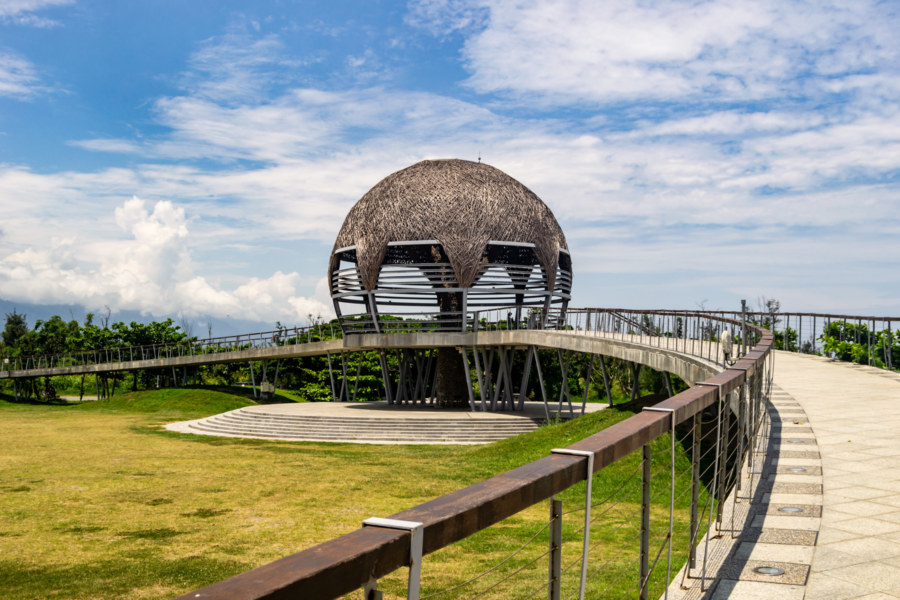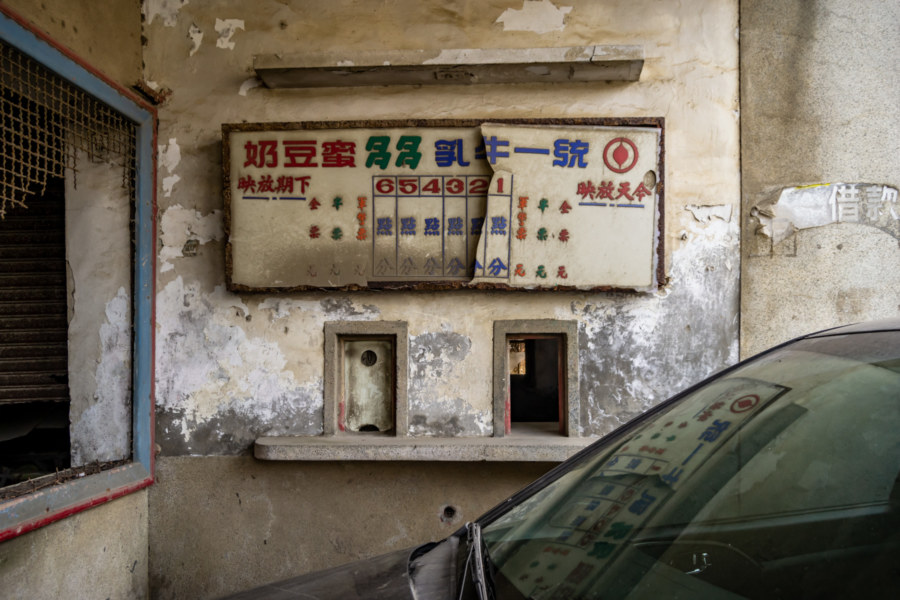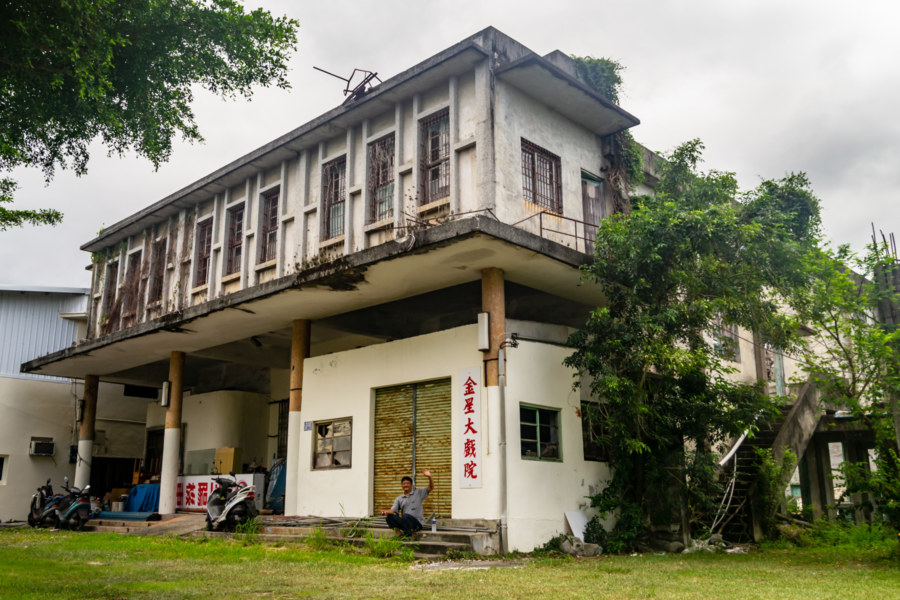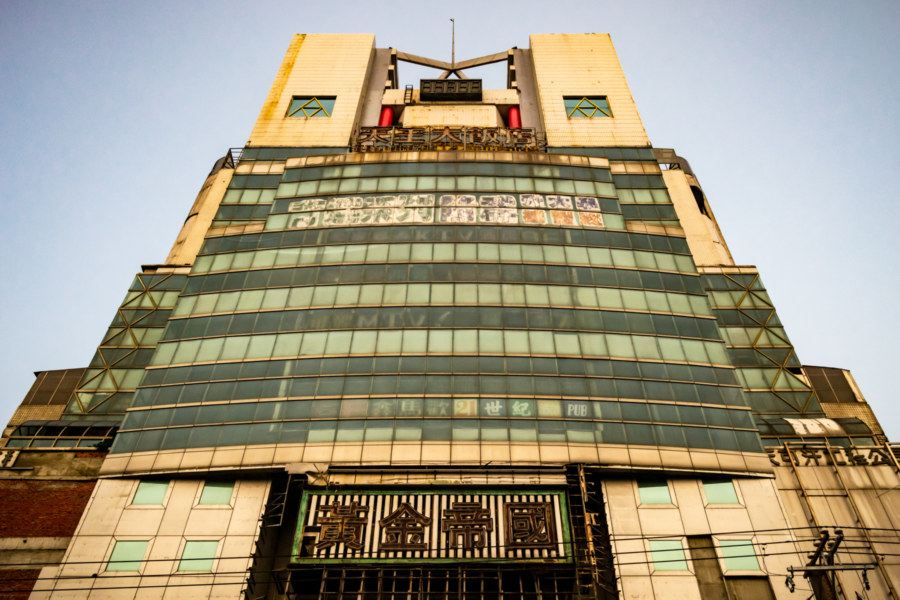Huázhōu Theater (華洲戲院) is a long-abandoned cinema located in Nanxi, a rural district nestled in the low hills of eastern Tainan, Taiwan. Easily reached via Provincial Highway 3, the main settlement in Nanxi is situated along the middle reaches of Tsengwen River, the fourth longest in the country. Nanxi, like most other parts of rural Taiwan, has suffered an almost continuous population outflow for decades, with household registration numbers almost halving from around 14,000 in 1981 to merely 8,000 in 2023. With so many people departing in search of opportunity in bigger cities we are left to wonder, what inspired the construction of such a large theater in this downtrodden town?
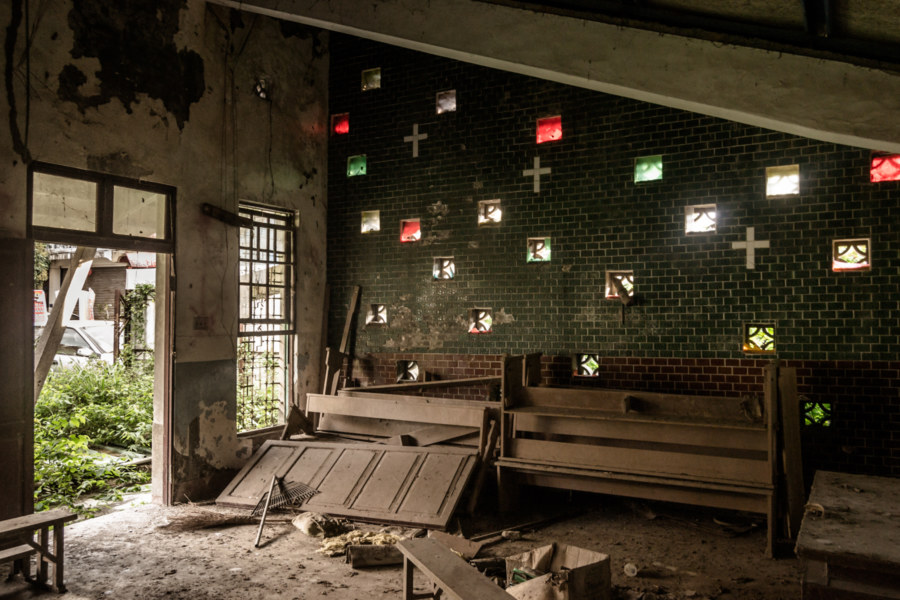
Taiwan is an unusually rich place for anyone interested in mapping out urban and industrial histories through the exploration of abandoned, disused, and neglected places. Gathered here are full reports and field notes from some of my many urban exploration (城市探險) adventures around the country.
Toubiankeng Police Station 頭汴坑警察官吏派出所
Tóubiànkēng Police Station (頭汴坑警察官吏派出所) is a remarkably well-preserved Japanese colonial era building situated in a small settlement in the foothills of eastern Taichung, Taiwan. Originally established in 1914, the station was reconstructed to standard specifications with reinforced concrete, red brick, and local cypress, likely in the early 1930s. Not only was it a police station, but it also served as a dormitory for the officers stationed here, agents of a colonial authority keen to extend control into the rugged mountains to the east. After the ROC assumed control of Taiwan operations continued much as before, and was only decommissioned in 1981 when a new police station was built immediately out front.
Kouhu Theater 口湖戲院
The overgrown ruins of Kǒuhú Theater (口湖戲院) can be found along a dusty country road on the outskirts of Kouhu, a desolate town in coastal Yunlin, at the westernmost extent of the Taiwanese mainland. Its most distinct feature is the exposed red brick facade, which might be unique among those vintage theaters still standing in earthquake-prone Taiwan. Not much is written about this old theater online, possibly due to its obscure location in the remote countryside, but it dates back to the early 1950s and likely remained in operation into the early 1980s.
Jinjin Theater 金金大戲院
The former Jīnjīn Theater (金金大戲院) is located midway along a major thoroughfare connecting Yingge with Taoyuan City in northern Taiwan. Technically it is still within New Taipei as the ragged border with Taoyuan swings around the theater, less than 100 meters away at some points. This second-run cinema opened to the public in 1985, screening a diverse assortment of films for as many as 900 guests in this highly industrialized suburb. It went out of business sometime around 2005 and has been mostly left to the elements since then, although food vendors still ply their trade along the sidewalk in front of the theater entrance, and some attempt has been made to sell commercial advertising space on the facade.
Ruimao Theater 瑞茂戲院
Ruìmào Theater (瑞茂戲院) is an old wooden theater hidden in the winding laneways of Guògōu (過溝), a small fishing and farming village in remote coastal Chiayi, Taiwan. Nobody seems to know exactly when this theater was established, although there is general agreement it likely dates back to the early post-war era. Remarkably, it was one of two theaters in this settlement, and one of maybe a dozen along this stretch of coast in the 1970s, when salt production and oyster farming buoyed the local economy. As with most other theaters of its vintage, this one closed sometime in the 1980s.
Zicheng Theater 自成大戲院
Zìchéng Theater (自成大戲院) is a derelict cinema located in Baozhong, a rural township on the coastal plains of Yunlin, Taiwan. After opening in 1966 this theater drew enormous crowds from the surrounding districts, particularly in its early years of operation, when it was customary for movie stars to appear on stage to promote new films. Business began to decline with the closure of the nearby sugar factory and the widespread adoption of home television in the late 1970s, ultimately leading to the final screening sometime around 1985. Since then the theater has remained idle, slowly decaying with the passage of years, its fading fortunes mirroring those of the surrounding settlement.
Huadong Valley Ride 2018: Taitung City
This entry documents my final day of riding on a bicycle trip down the Huadong Valley in 2018. I began with a short yet eventful spin around Taitung City, the administrative capital of Taitung, and headed southwest across the alluvial plains before curving back to catch a train bound for Taipei in the afternoon. I already introduced the history, geography, and culture of Taitung City in this post from a previous visit in 2015, so I’ll focus on specific sites I visited on this particular trip.
Mailiao Jincheng Theater 麥寮金城戲院
Jīnchéng Theater 金城戲院 is located in Mailiao, a rural township in northwestern Yunlin, Taiwan. This theater is something of a cypher; it was reputedly built in 1965, but may have only opened in 1968, and business records record only one transaction in 1975. It probably closed in the late 1980s or very early 1990s, a casualty of changing consumer habits and population outflow to larger urban centers. Beyond that, not much is known about this hulking monster of a theater, which may have accommodated something like 800 patrons at its peak.
Jinxing Theater 金星大戲院
Jīnxīng Theater 金星大戲院 is located in the small town of Zhīběn 知本 on the southern outskirts of Taitung City, Taitung, in southeastern Taiwan. Zhiben is home to the Katipul group 卡地布部落 of the Puyuma people 卑南族, one of Taiwan’s recognized Indigenous groups, but this theater was constructed in 1967 to cater to the many KMT veterans who settled here after the completion of the Central Cross-Island Highway 中部橫貫公路. Named after Venus (literally “Golden Star” in Chinese), it went out of business shortly after it was sold to a lumber company in 1980 and has been abandoned ever since.
Postcards From Yuanlin 員林明信片
Yuanlin is a modest settlement of approximately 125,000 residents located on the Changhua Plain (彰化平原) in eastern Changhua, Taiwan. It was formerly the most populous urban township in the nation, but Yuanlin was upgraded to a county-controlled city in 2015, second only to the administrative capital, Changhua City. Considerable work has been done in recent years to improve the urban environment of Yuanlin, and it feels like one of the few places between Taichung and Tainan that isn’t falling into disrepair and emptying out. That being said, urban decay remains widespread in Yuanlin, and there are many interesting ruins worth exploring before they disappear. For students of city planning and development this compact city also has quite a lot to offer—and in this post I aim to introduce some of its more intriguing features, mainly drawing upon photographs from 2013 to 2015, when I was spending significant amounts of time in the area.
